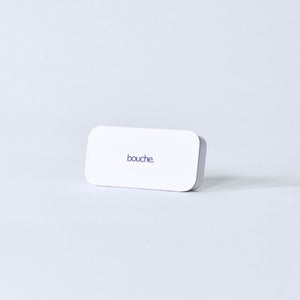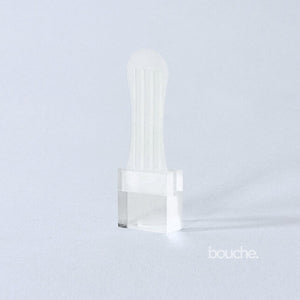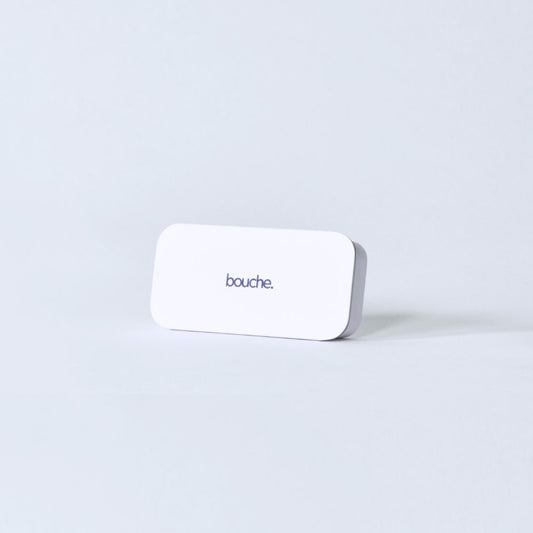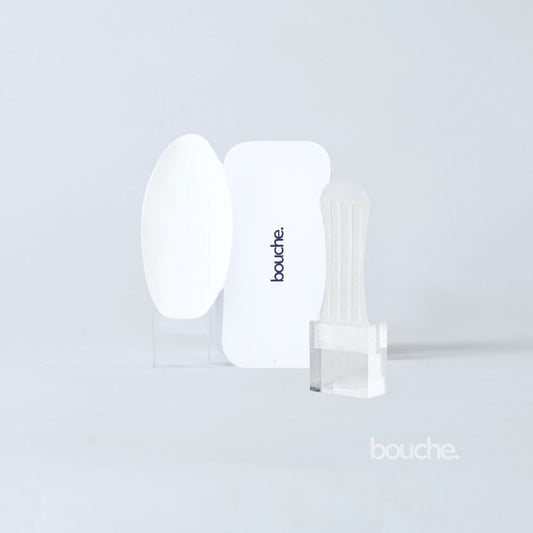Key Takeaways
- Nasal strips physically open the nasal passages for easier breathing, especially if you have congestion or a deviated septum.
- Mouth tape encourages nasal breathing by gently sealing the lips, which can reduce snoring and improve sleep quality for many people.
- Scientific studies suggest mouth tape is more effective for reducing snoring and supporting healthy sleep patterns, especially for habitual mouth breathers.
- Both options are non-invasive, drug-free, and easy to use, but the right choice depends on your breathing habits, sleep issues, and comfort.
Can’t breathe well at night? Whether it’s snoring, dry mouth, or waking up groggy, better sleep starts with better breathing. And two simple tools are gaining attention: nasal strips and mouth tape. But which one is right for you? This article breaks down the science, benefits, and practical considerations behind each option so you can make an informed choice for better sleep.
What Are Nasal Strips and Mouth Tape?
Nasal Strips
Nasal strips are adhesive bands placed across the bridge of the nose. They work by gently pulling open the nostrils, widening the nasal passages, and reducing resistance to airflow. This makes breathing easier, particularly for those with nasal congestion, allergies, or structural nasal issues. For a premium option, see Bouche Nasal Strips.
Mouth Tape
Mouth tape is a soft, skin-safe adhesive designed to keep your lips closed during sleep. By encouraging nasal breathing, mouth tape can help minimize snoring, prevent dry mouth, and support better oxygen exchange. The practice is especially popular among people who habitually breathe through their mouths at night. For a high-quality solution, check out Bouche Mouth Tape.
How Do They Work?
|
Feature |
Nasal Strips |
Mouth Tape |
|
Main Function |
Opens nasal passages |
Keeps mouth closed to promote nasal breathing |
|
Application |
Across the nose |
Over the lips |
|
Target Users |
Those with nasal congestion or mild snoring |
Mouth breathers, mild snorers, CPAP users |
|
Key Benefits |
Improved airflow, reduced snoring |
Reduced snoring, better sleep, oral health |
|
Limitations |
Less effective for mouth breathing |
Not for nasal obstruction or severe apnea |
The Science Behind Nasal Strips vs. Mouth Tape
Nasal Strips: What Does the Research Say?
- Improved Airflow: Studies show nasal strips can significantly increase nasal airflow and reduce resistance, especially for people with congestion or a deviated septum.
- Snoring Relief: Research indicates nasal strips may reduce snoring intensity and frequency for some users, but results are mixed.
- Non-Invasive: Nasal strips are drug-free, easy to use, and suitable for most people seeking temporary relief from congestion or mild snoring.
However, nasal strips do not address mouth breathing and may not provide lasting benefits for those with sleep apnea or chronic snoring.
Mouth Tape: Backed by Science
- Reduces Snoring: Studies show mouth taping can reduce snoring and improve REM sleep — especially for mouth breathers and people with mild sleep apnea.
- Better Sleep Patterns: Mouth taping has been linked to increased REM sleep cycles and fewer breathing interruptions.
- Oral Health Benefits: Nasal breathing helps prevent dry mouth, bad breath, and gum disease by keeping the mouth closed during sleep.
- Supports CPAP Therapy: For CPAP users, mouth taping can help minimize air leaks and improve therapy effectiveness.
It’s important to note that mouth taping is not a cure for sleep apnea and should not be used by those with nasal obstructions or severe breathing issues. Always consult a healthcare provider if you have concerns about your breathing during sleep.
Benefits of Nasal Strips
- Easy to apply and remove
- Non-medicated and non-invasive
- Effective for nasal congestion and mild snoring
- Can improve sleep quality for those with nasal blockages
- Affordable and widely available
Benefits of Mouth Tape
- Promotes nasal breathing, which filters and humidifies air
- Reduces snoring more effectively than nasal strips for mouth breathers
- Supports oral health by preventing dry mouth and cavities
- May improve sleep quality and reduce daytime fatigue
- Can be used alongside CPAP therapy for better results
Can Mouth Taping Change Your Jawline?
There’s growing interest in whether mouth taping can define the jawline or change facial structure. While some proponents suggest that consistent nasal breathing may influence facial muscle tone and posture, current scientific evidence does not support the claim that mouth taping alone can reshape the jawline in adults. Jawline appearance is mainly determined by genetics, age, and overall muscle tone.
Who Should Use Nasal Strips?
- People with temporary nasal congestion due to allergies, illness, or a deviated septum
- Those seeking a simple, removable solution for mild snoring
- Individuals who do not habitually breathe through their mouth at night
Who Should Use Mouth Tape?
- Habitual mouth breathers looking to switch to nasal breathing
- People with mild snoring or mild sleep apnea (after consulting a doctor)
- CPAP users experiencing mouth leaks during therapy
- Anyone wanting to support oral health and reduce dry mouth
For a combined approach, consider the Breathe Better Kit, which includes both mouth tape and nasal strips.
Are There Any Risks?
Both nasal strips and mouth tape are considered safe for most healthy adults. However, you should avoid mouth taping if you:
- Have nasal obstructions or can’t breathe comfortably through your nose
- Suffer from severe sleep apnea without medical supervision
- Experience skin irritation or allergic reactions to adhesives
- Feel anxious or claustrophobic with your mouth covered
Nasal strips are generally well-tolerated but may cause mild skin irritation in sensitive individuals.
Can You Use Nasal Strips and Mouth Tape Together?
Yes, some people use both nasal strips and mouth tape to maximize nasal breathing—especially if they have mild congestion and also tend to mouth breathe. However, this combination should only be used if you can breathe freely through your nose and do not have underlying sleep disorders. For convenience, try the Breathe Better Kit.
Bouche: Science-Backed Mouth Tape for Better Sleep
At Bouche, we believe in the power of evidence-based, non-invasive tools to improve sleep and health. Our medical-grade mouth tape is designed for sensitive skin and manufactured in North America using hypoallergenic materials. Bouche mouth tape is CPAP-compatible, making it a trusted choice for those seeking to enhance their sleep routine, reduce snoring, and support long-term wellness. Our mission is to help you breathe better, sleep deeper, and feel your best—night after night. Learn more about Bouche Mouth Tape.
“Super simple, but works. So happy with this product. I look forward to going to bed.” – Alexa P, Bouche customer.
Choosing Between Nasal Strips and Mouth Tape
The decision between nasal strips and mouth tape depends on your unique needs:
- If you have nasal congestion or structural nasal issues, nasal strips may offer quick relief and easier breathing.
- If you’re a habitual mouth breather or experience dry mouth and snoring, mouth tape is likely the better solution, especially for promoting healthy nasal breathing patterns.
- For CPAP users, mouth tape can reduce air leaks and improve therapy outcomes.
- Always consult a healthcare provider if you have sleep apnea, chronic snoring, or trouble breathing at night.
Practical Tips for Safe Use
- Always test adhesives on your skin before full use.
- Ensure you can breathe comfortably through your nose before using mouth tape.
- Clean and dry your skin before applying either product.
- If you experience discomfort, stop use immediately and consult a healthcare professional.
Actionable Takeaways
- Nasal strips and mouth tape both support better breathing and sleep, but mouth tape is generally more effective for reducing snoring and encouraging nasal breathing in habitual mouth breathers.
- Use nasal strips for temporary congestion or mild snoring.
- Use mouth tape for long-term oral health and sleep benefits, especially if you mouth breathe at night.
- Consult your doctor before trying these tools if you have underlying health conditions.
Ready to try one or both? Bouche’s Breathe Better Kit makes it easy to test both tools and find what works best for you.
Frequently Asked Questions
Q. What’s the Difference Between Nasal Strips and Mouth Tape?
Nasal strips open the nose to improve airflow, while mouth tape keeps the mouth closed to encourage nasal breathing.
Q. Which Is More Effective for Reducing Snoring: Nasal Strips or Mouth Tape?
Mouth tape is generally more effective for reducing snoring in mouth breathers and those with mild sleep apnea.
Q. Are There Any Risks Associated with Mouth Taping?
Risks include skin irritation, discomfort, and breathing difficulties if you have nasal obstruction. Never use mouth tape if you cannot breathe freely through your nose.
Q. Can I Use Nasal Strips and Mouth Tape Together?
Yes, if you can breathe easily through your nose, using both can maximize nasal breathing and reduce snoring.
Q. How Do I Choose Between Nasal Strips and Mouth Tape for Better Sleep?
Consider your main issue: use nasal strips for congestion, mouth tape for mouth breathing and snoring. If unsure, consult a healthcare provider.
By understanding the science and practical benefits of nasal strips vs. mouth tape, you can make the best choice for your sleep and health. Remember, better breathing starts with the right tools—and a commitment to restful nights.








